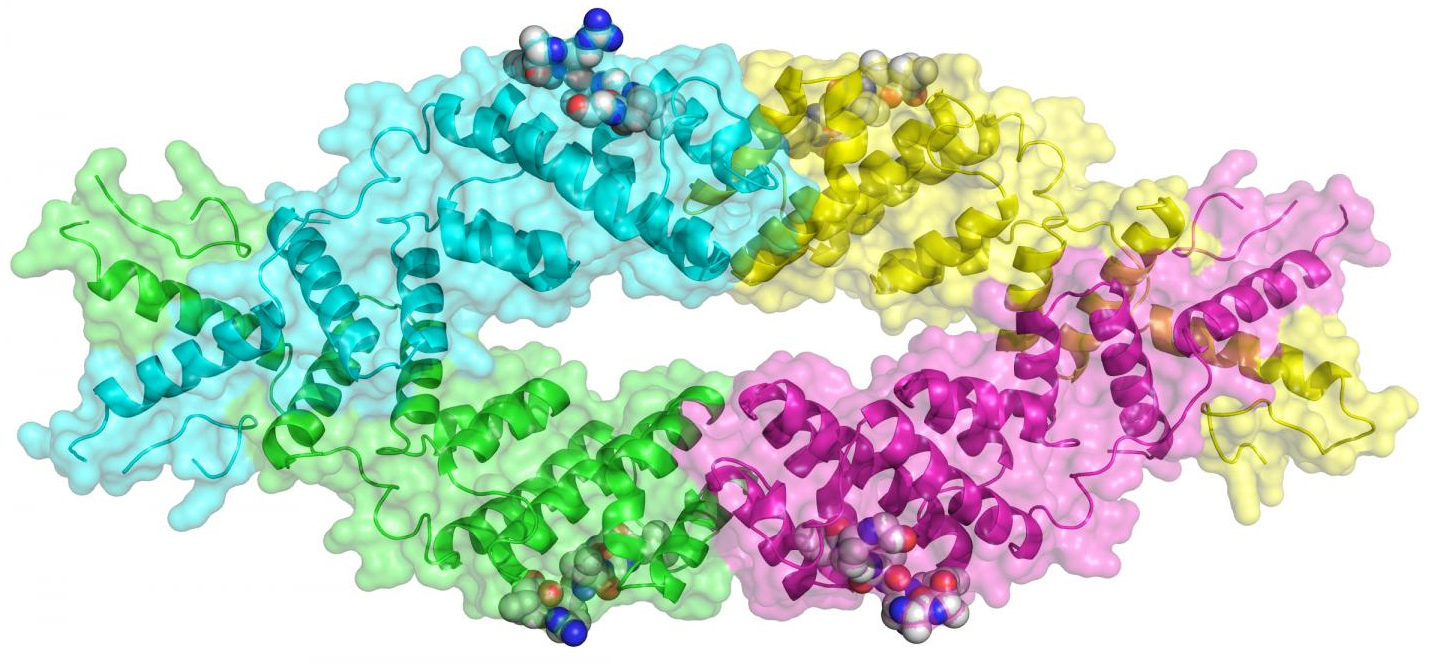An important molecular mechanism in plants that has significant similarities to certain signaling mechanisms in humans that are closely linked to early embryonic development and to diseases such as cancer, has been revealed by scientists using the U.S. Department of Energy’s Advanced Photon Source (APS) at Argonne National Laboratory.
In plants, as in animals and humans, intricate molecular networks regulate key biological functions, such as development and stress responses. The system can be likened to a massive switchboard — when the wrong switches are flipped, genes can be inappropriately turned on or off (activated or repressed), leading to the onset of diseases. Although gene repression is thought to be equally important as gene activation for this regulation, relatively little is known about the mechanisms of gene repressors and co-repressors.
Now, a team of scientists from the Van Andel Research Institute, the Chinese Academy of Sciences, and Northwestern University have unraveled how an important plant protein, known as TOPLESS, interacts with other molecules responsible for turning genes off. Their findings in plants provide a general model across species for this type of gene silencing, which is linked to several vital biological functions in humans. The discovery was published in Science Advances.
TOPLESS functions as a co-repressor and interacts with repressors containing ethylene-responsive element binding factor-associated amphiphilic repression (EAR) motifs. EAR motifs are the most common form of transcriptional repression motifs found in plants and are thought to facilitate stable epigenetic regulation of gene expression via recruitment of chromatin modifiers.
TOPLESS plays important roles in plant development; its name stems from the fact that mutations in TOPLESS can give rise to seedlings in which the shoot is transformed into a second root, hence "topless" seedlings. In humans, similar proteins also are altered in many types of tumors, and control embryonic development and the development of neurons.
The team notes that this is really a fundamental discovery. Their structure shows the corepressor TOPLESS interacting with key repressor motifs, which constitutes a major component of gene silencing in plants. Understanding this interaction in plants gives scientists a unique insight into similar pathways in humans that involve these proteins, which are notoriously tough to investigate.
Using x-ray crystallography at the Life Sciences Collaborative Access Team (LS-CAT) 21-ID beamline at the APS, the team determined the three- dimensional structure of TOPLESS, both on its own and when linked with other molecules responsible for turning genes off, thereby regulating gene expression. Although these interacting molecules were chosen from different signaling pathways in plants, they all linked up with TOPLESS in the same manner
This structure will allow the researchers to take a more targeted approach to investigating TOPLESS's counterparts in humans and significantly expands our knowledge base. The team is extremely excited to continue this work to better understand these proteins and how they interact with other molecules in health and disease states.
The new paper is the third in a trio of publications that unveil key components of fundamental molecular processes. Although the new study provides further insight into human molecular pathways, the work also directly describes how components of the molecular switchboard in plants interact to regulate responses to a multitude of stressors, including temperature fluctuations. The new findings follow an earlier Nature paper, which was included in the top ten list of scientific breakthroughs of 2009 by Science magazine, and an earlier Science paper, both of which describe how plants respond to drought and temperature stress. Taken together, the papers not only have implications for developing hardier plants but also for determining molecular structures for components of entire pathways.
See: Jiyuan Ke1,2*, Honglei Ma1,2*, Xin Gu2, Adam Thelen2‡, Joseph S. Brunzelle3, Jiayang Li1, H. Eric Xu1,2, and Karsten Melcher1,2, “Structural basis for recognition of diverse transcriptional repressors by the TOPLESS family of corepressors,” Sci. Adv. 1(6), e1500107 (24 July 2015). DOI: 10.1126/sciadv.1500107
Author affiliations: 1Chinese Academy of Sciences, 2Van Andel Research Institute, 3Northwestern University ‡Present address: Michigan State University
Correspondence: [email protected], [email protected]
This work was supported by the Van Andel Research Institute (H.E.X. and K.M.); Ministry of Science and Technology (People’s Republic of China) grants 2012ZX09301001, 2012CB910403, 2013CB910600, XDB08020303, 2013ZX09507001, and National Science Foundation 91217311 (H.E.X.); and National Institutes of Health grants DK071662 (H.E.X.) and GM102545 and GM104212 (K.M.). LS-CAT is supported by the Michigan Economic Development Corporation and the Michigan Technology Tri-Corridor (Grant 085P1000817). This research used resources of the Advanced Photon Source, a U.S. Department of Energy (DOE) Office of Science User Facility operated for the DOE Office of Science by Argonne National Laboratory under contract no. DE-AC02-06CH11357.
Argonne National Laboratory is supported by the Office of Science of the U.S. Department of Energy. The Office of Science is the single largest supporter of basic research in the physical sciences in the United States, and is working to address some of the most pressing challenges of our time. For more information, please visit science.energy.gov.

